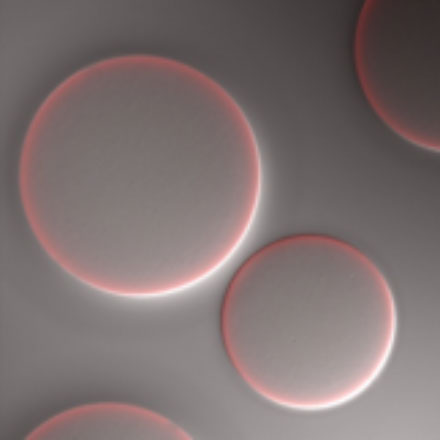Research Mission
Cells of higher organisms such as plants and animals are divided into compartments by biological membranes. This allows different functions to occur efficiently and simultaneously in different parts of the cell. Each membrane is composed of a lipid bilayer and embedded proteins that perform a wide range of essential cellular functions. Channels and transporters control the transport of ions, lipids and metabolites. Signal transduction involves receptors that sense changes in the cellular environment to initiate specific cell responses. Dysfunction of the transport and signalling systems are associated with serious human diseases. Our aim is to reveal the molecular mechanisms of transport and signalling.
Current Research Projects
Molecular analysis of lipid transporters at the single vesicle level (supported by the German Research Foundation)

Lipid transporters are integral membrane proteins that play a central role in moving lipids across cellular membranes, thereby controlling numerous cellular processes including vesicle biogenesis, cell signalling, morphogenesis, and migration. Reconstitution of the purified transporters into giant unilamellar vesicles allows us to study their activity in defined lipid environments by time-resolved fluorescence microscopy. The powerful combination of membrane protein chemistry and imaging techniques provides important new insight into the molecular characteristics, regulation, and working mechanism of lipid transporters as vital components of cells.
MAGNEURON – Hijacking cell signalling pathways with magnetic nanoactuators for remote controlled stem cell therapies of neurodegenerative disorders (Prof. Dr. Rolf Heumann, FET-Open research project)
In neurodegenerative diseases such as Parkinson`s dopaminergic cells are lost in the brain. A promising concept is the application of cell replacement therapy using programmed neurons derived from the patient´s stem. In order to stimulate neurite regeneration in the brain an inhibitory environment has to be overcome. In addition, the direction of neurite growth towards the denervated target region is instrumental for functional integration and neuronal circuit formation. In this MAGNEURON project we direct neurite growth by external magnetic stimulation. A major aim is to introduce functionalized magnetic nanoparticles into the cytoplasm of nerve cells and to direct their neurite growth after intracellular activation of the endogenous Ras signalling pathway.

